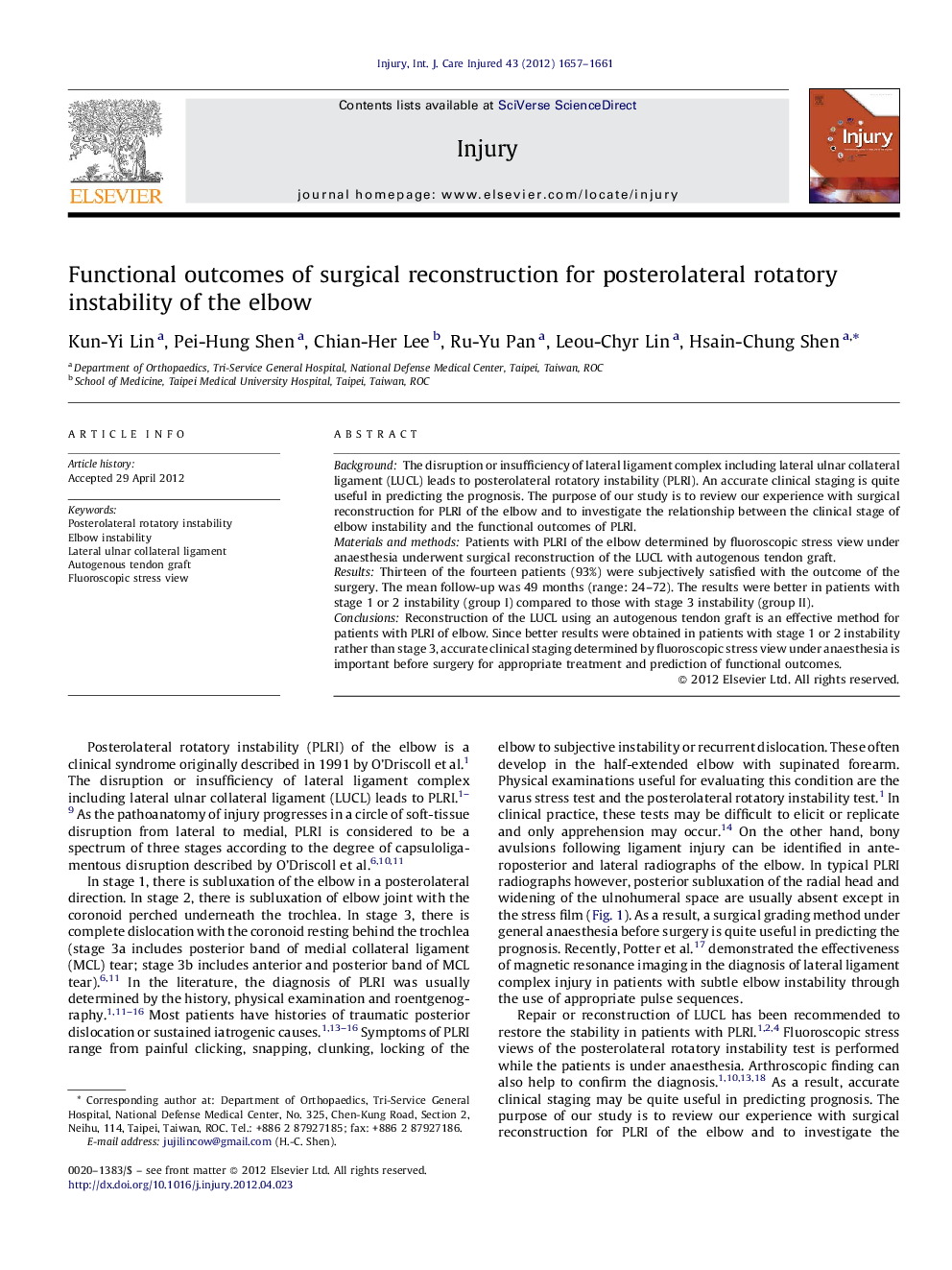| Article ID | Journal | Published Year | Pages | File Type |
|---|---|---|---|---|
| 3240312 | Injury | 2012 | 5 Pages |
BackgroundThe disruption or insufficiency of lateral ligament complex including lateral ulnar collateral ligament (LUCL) leads to posterolateral rotatory instability (PLRI). An accurate clinical staging is quite useful in predicting the prognosis. The purpose of our study is to review our experience with surgical reconstruction for PLRI of the elbow and to investigate the relationship between the clinical stage of elbow instability and the functional outcomes of PLRI.Materials and methodsPatients with PLRI of the elbow determined by fluoroscopic stress view under anaesthesia underwent surgical reconstruction of the LUCL with autogenous tendon graft.ResultsThirteen of the fourteen patients (93%) were subjectively satisfied with the outcome of the surgery. The mean follow-up was 49 months (range: 24–72). The results were better in patients with stage 1 or 2 instability (group I) compared to those with stage 3 instability (group II).ConclusionsReconstruction of the LUCL using an autogenous tendon graft is an effective method for patients with PLRI of elbow. Since better results were obtained in patients with stage 1 or 2 instability rather than stage 3, accurate clinical staging determined by fluoroscopic stress view under anaesthesia is important before surgery for appropriate treatment and prediction of functional outcomes.
